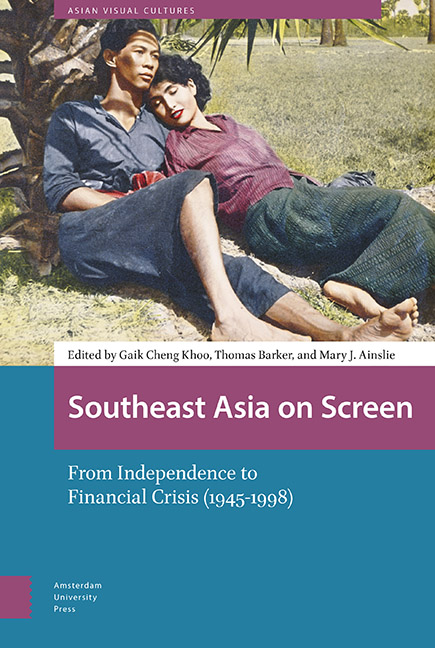Book contents
- Frontmatter
- Contents
- List of Illustrations
- Introduction: Southeast Asia on Screen: From Independence to Financial Crisis (1945–1998)
- Section 1 Independence and Post-World War II Filmmaking: Nation-building, Modernity and Golden Eras
- Section 2 Key Directors
- Section 3 Popular Pleasures
- About the Authors
- Index
Introduction: Popular Pleasures
Published online by Cambridge University Press: 20 November 2020
- Frontmatter
- Contents
- List of Illustrations
- Introduction: Southeast Asia on Screen: From Independence to Financial Crisis (1945–1998)
- Section 1 Independence and Post-World War II Filmmaking: Nation-building, Modernity and Golden Eras
- Section 2 Key Directors
- Section 3 Popular Pleasures
- About the Authors
- Index
Summary
By the 1960s important shifts were happening across the film industries of Southeast Asia affected by both domestic forces and changes in the international film market. The 1950s ‘golden eras’ came to an end, marked by a shift from a studio system to a free market comprising new independent film producers. These producers would develop new ways of targeting popular audiences and thereby create new kinds of genres, including action, horror, romance and comedies, often echoing production patterns from major film centres such as the United States, Italy, Japan and Hong Kong. In content and form these films were very different to those of the studio eras or as imagined by the idealist and artistic directors in the previous section.
While popular cinema is often dismissed or overlooked in national film histories, such films offer important reflections and debates that link the common experiences across Southeast Asia. Targeting wide audiences, popular films were responding to social changes, including increased economic and infrastructure development, the rise of strongmen leaders such as Marcos, Suharto and Lee, the formation of the middle class, as well as developments in global cinema such as the rise of the Hollywood blockbuster.
As Sebastiampillai notes (this volume, Chapter 10), Philippines star Nora Aunor encapsulated this shift between eras. Starting her career as a creation of the dying studio era in the late 1960s, acting in ‘love team’ films in soppy musical romances, by the late 1970s she would emerge as an icon of the new independent cinema in the Philippines. Always a people's heroine, Nora Aunor's characters spoke to ordinary people about their dreams and aspirations. In Indonesia, the popular actress Suzzanna underwent a similar transition into the 1970s into roles in new urban dramas and as an icon of horror cinema. Modernization brought with it changes to the roles of women and ideas of feminism, challenging existing gender norms, as more women moved into the workforce and public sphere. Many films depicted the social contestation as women characters sought to escape traditional roles and assert their presence in the public sphere whether as the transnational crime fighter Cleopatra Wong (as discussed in Siddique, this volume, Chapter 12) or Nora Aunor's role as the suffering woman in Himala (Ishmael Bernal, 1982).
- Type
- Chapter
- Information
- Southeast Asia on ScreenFrom Independence to Financial Crisis (1945–1998), pp. 213 - 214Publisher: Amsterdam University PressPrint publication year: 2020



